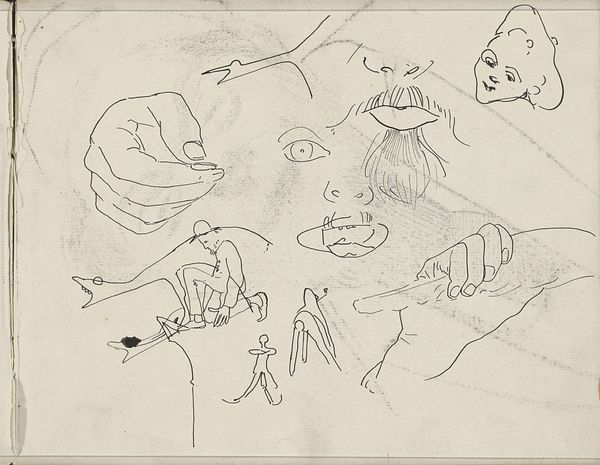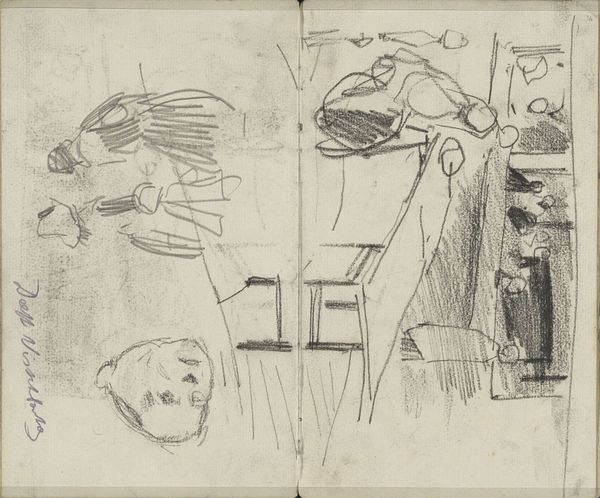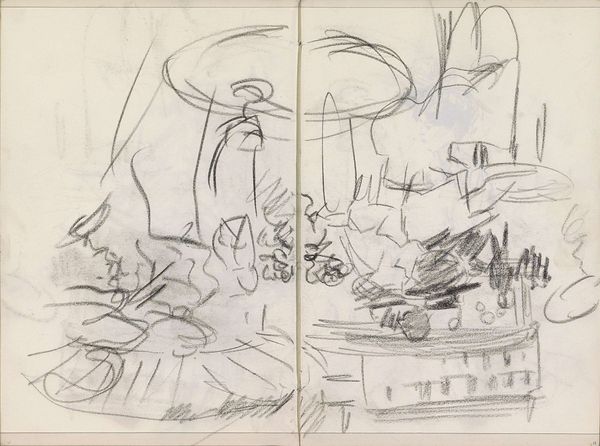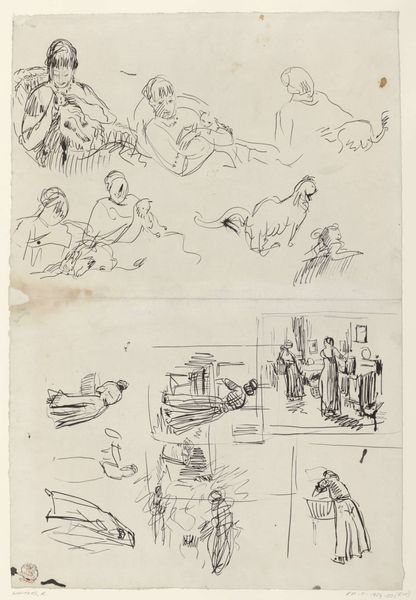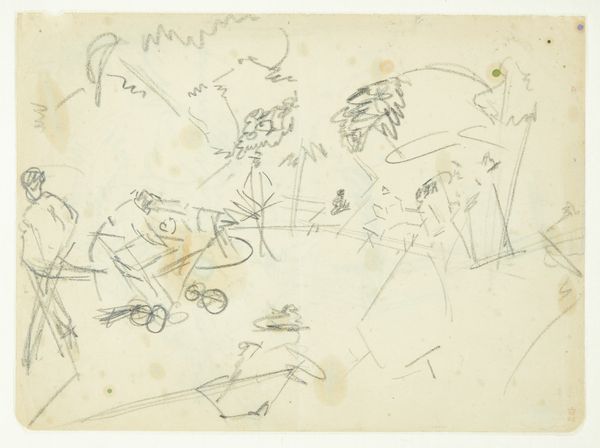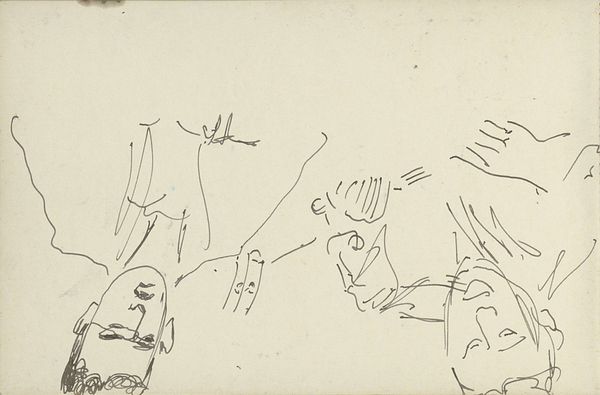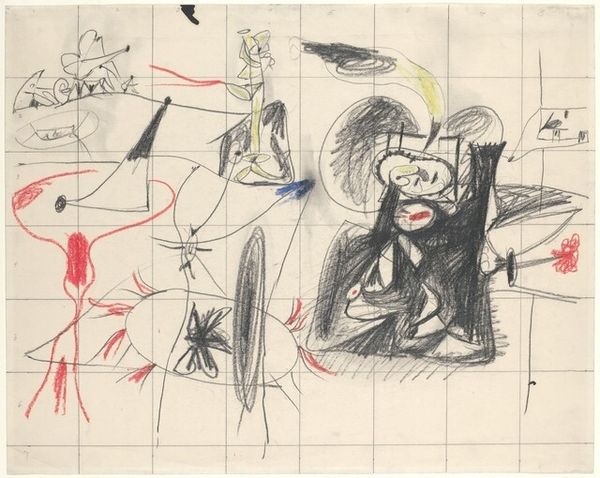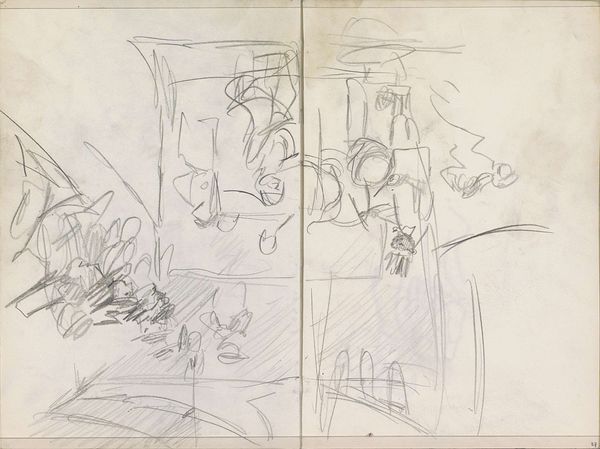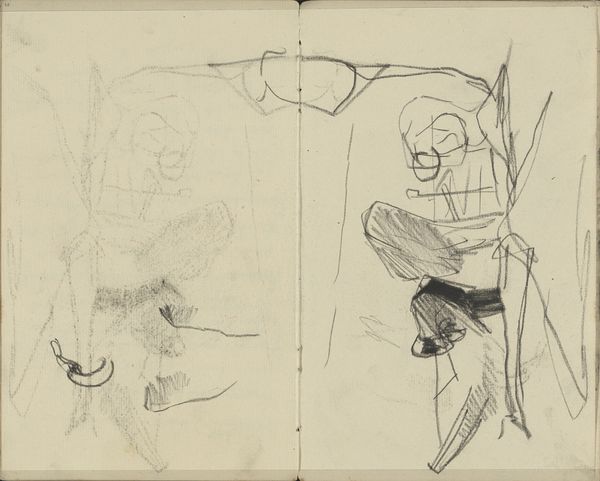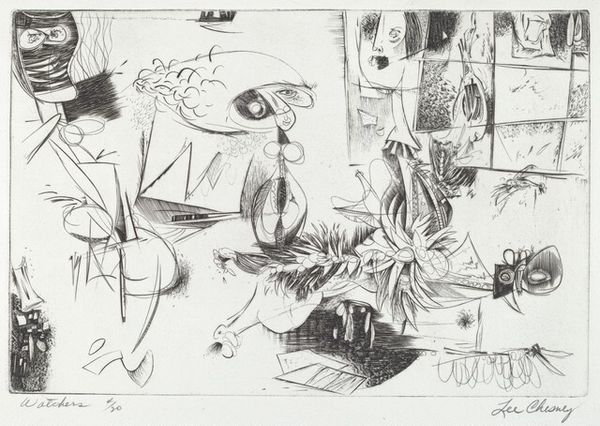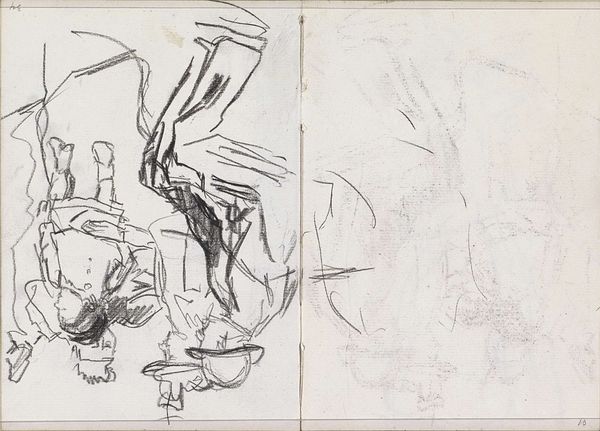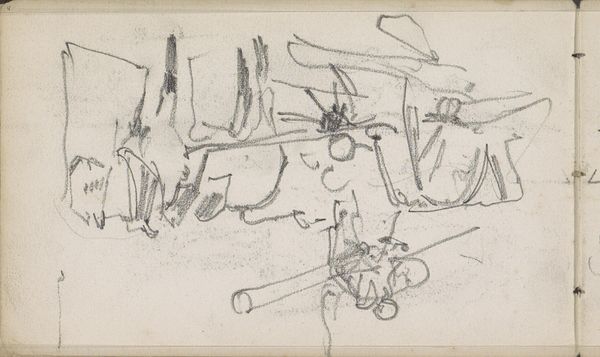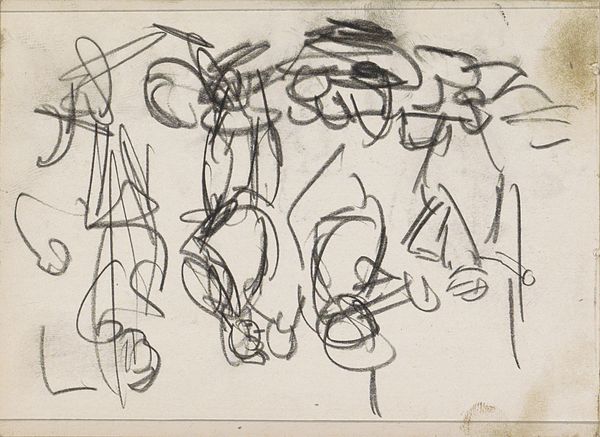
Studieblad, onder andere met figuren en dieren c. 1895 - 1900
0:00
0:00
drawing, paper, ink
#
drawing
#
art-nouveau
#
figuration
#
paper
#
ink
#
line
Copyright: Rijks Museum: Open Domain
Curator: This is "Studieblad, onder andere met figuren en dieren," a study sheet featuring figures and animals, crafted around 1895 to 1900 by Carel Adolph Lion Cachet. It’s a striking ink drawing on paper, currently held in the Rijksmuseum collection. The Art Nouveau stylistic elements are quite evident, especially in the lines and forms. Editor: It feels restless, doesn't it? A jumble of fleeting thoughts, captured quickly. The cats particularly stand out, with their almost grotesque, exaggerated features. There's something unsettling, almost satiric, about the piece as a whole. Curator: Yes, the cat imagery carries significant symbolic weight. In the fin de siècle, cats were often associated with independence, female sexuality, and even a certain kind of decadent aesthetic. Their ambiguous nature mirrors the shifting social roles and anxieties of the time. Think of Baudelaire or Steinlen’s poster for the “Tournée du Chat Noir”. Editor: Precisely. And notice how these figures are rendered with such varying degrees of detail. Some are fully realized portraits, while others are mere outlines, ghosts inhabiting the same space. The juxtaposition implies a leveling of social significance, reducing figures to mere representations. Curator: It speaks to the period’s broader anxieties about identity and representation as well. Consider the rise of photography around this time— suddenly, capturing likenesses becomes democratized, raising profound questions about art’s traditional role in immortalizing the individual. The artist seems to be grappling with what it means to represent at all. Editor: This ‘democratization’ isn’t without its exclusions. While photography offered a more accessible means of representation, it simultaneously reinforced existing power structures. Think about who was behind the camera and whose images were circulated—there's an element of control being exerted even through what seems like mere observation. The marginalized are sketched as barely noticeable… Curator: Absolutely, the selective representation cannot be overlooked, the almost hurried or careless way that certain aspects are merely sketched serves to undermine what exactly it is representing; which figures get detail versus which get merely scratched out onto the sheet... But the sheer density of images and symbols is meant to convey a mood of underlying turbulence and a shift of collective values as society becomes less certain, perhaps even skeptical, and heads into a more globalized context.. Editor: In conclusion, perhaps Cachet invites us to engage critically with the very act of viewing and interpreting imagery, urging us to question whose perspectives are privileged and which are marginalized. Curator: Indeed, and appreciate the continuity of the symbol in the work’s own historical context, while remembering the importance of what those symbols invoke in present day as they become an ingrained element of shared cultural memory.
Comments
No comments
Be the first to comment and join the conversation on the ultimate creative platform.
